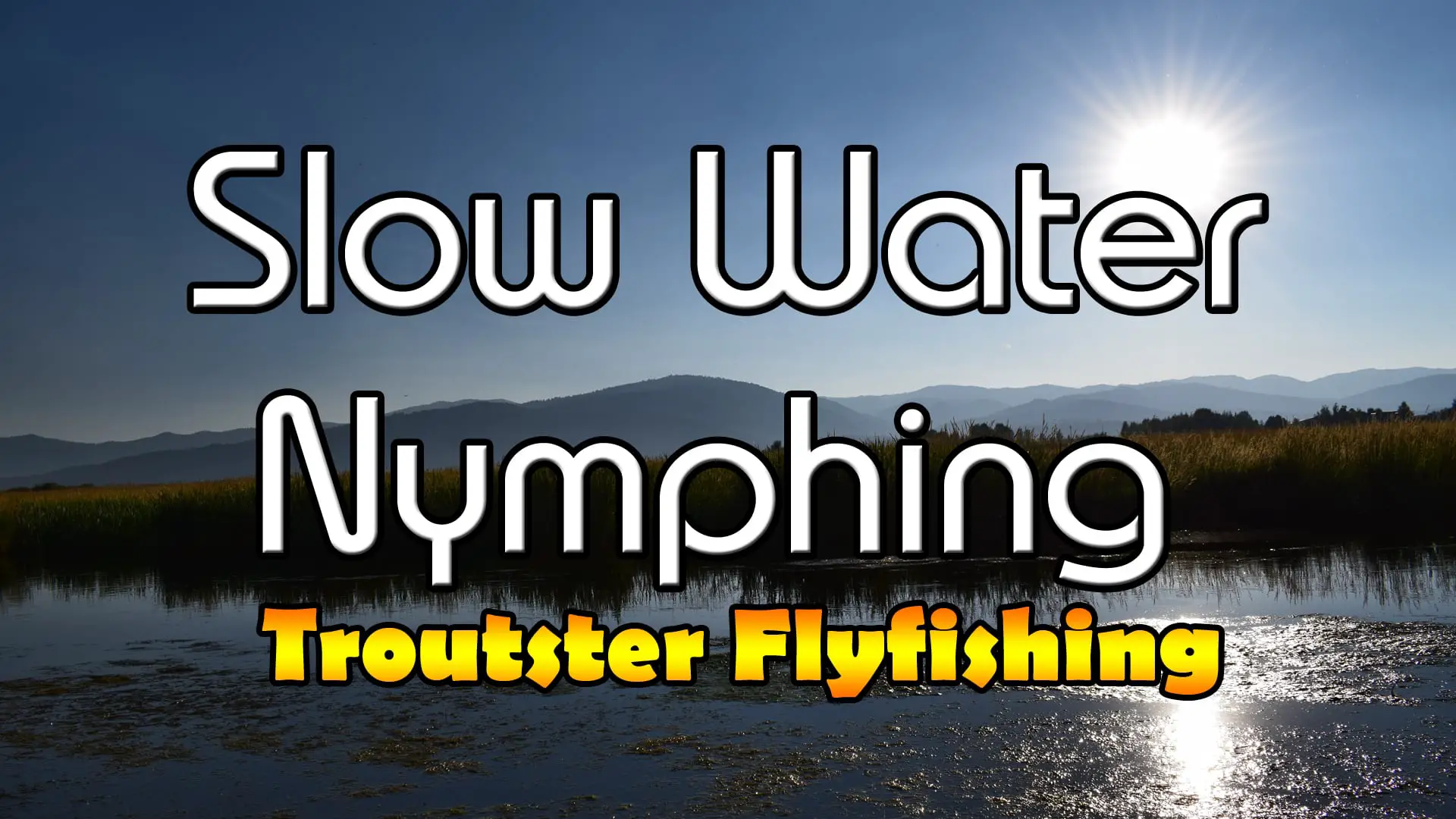This post was last updated on July 16th, 2021 at 11:37 am
A couple people have asked me to make a video about how to catch trout on nymphs in slow water. One of the pitfalls of trying to outsmart any trout in slow water is that they have a lot of time to examine your flies–they also will be critiquing your drift! Probably the number one mistake any slow water fly angler makes is trying to get in too close to the trout.
Earlier this spring I took my hero 4 gopro and placed it under water in a slow creek at about 3 feet deep. I then rowed away in my driftboat and floated back through the area my camera was watching. I wanted to see just how well a trout in there could see what was going on above the surface. I was not only amazed at how easily everything above the surface could be seen, but I also was surprised at how the slightest ripple in the water would distort the image above the surface. I have to believe that the trout go into full red alert mode when a random ripple in the water occurs. I don’t want to get too far off track here, but I just wanted to make the point that if you are fishing nymphs with a big indicator or large hopper dropper in slow water; there’s a chance you are causing too much commotion. Just like with slow water dry fly fishing, you need to make sure your fly will land well away from the trout.
Paranoid Slow Water Trout
Trout suffer from pure paranoia when they live in slow water. You can see them…..they can see you even better. They rely on keen sight to not get killed every single day. When you cast a weighted nymph into the water, it makes a very distinct noise. How do I know that a nymph landing in the water makes a ton of noise? Every time I watch footage of a camera I put underwater, I’m amazed at what sounds it picks up. I have been experimenting more and more with underwater photography. The moral of this short story is to land your fly far away from the fish on each drift, because if my Gopro can pick up the sound; the trout sure can too!
They Might “Feel” you Coming
Finally! Now that I’m done preaching, we’ll get down to the nitty gritty of how to catch big trout in slow water on nymphs! In my experience trout do not have any fear at all about strike indicators. Even in slow water, a chartreuse ball of plastic does not raise any flags to the fish. They watch crap float down river all the time. If trout stopped eating every time they saw something “fishy” float by, they’d never eat. However things get awfully “fishy looking” when they start twitching around on your mend. Like most fish, the trout have a lateral line. This is a way that fish can identify and nearly pinpoint objects moving in the water. The larger the object moving, the more the trout will be aware of it. Think about the amount of moving debris in a fast river vs the amount in a slow stream. The fast river trout will be sort of “numb” to the constant barrage of movement in the water. The slow water trout will be the paranoid guys. The key to catching these trout in slow water on nymph rigs is to use smaller indicators like these fish pimp ones or using a small hopper dropper rig. The smaller indicators will move less water and therefore alert less trout.
Slow Water Nymph Fishing Success
Matching the hatch is so much more important in slow water than any other time. So we’ll assume that you have turned over rocks and looked for prevalent nymphs. Try your best to match the size and color as close as possible.
I did a small test of fluorocarbon vs monofilament the other day, but I can’t say anything is conclusive. I want to believe that fluorocarbon has a higher density and will get your nymphs down faster. I also want to believe that it is less visible to trout underwater, but I don’t. Either way, the lighter the line is, the faster it will sink. Thin diameter cuts through the water better, allowing for a longer and more effective drift. The trout eating dry flies are less likely to see your line than they are with nymphs. I almost never use 4 or 5x, but if I do I’m probably nymphing.
Quick Summary of Slow Water Nymph Fishing Basics
Tips
- Keep your distance from the fish
- Land your cast far upstream of the area where the fish are
- Try not to make riffles in the water (with wading or wild casting/mending)
- Match the hatch! The slow water allows the trout to examine your setup
Techniques
- Using a small float (like the fish pimp indicator)
- Hopper dropper rig works well in slow water
- Small dry fly with a weightless nymph dropper as shown in video
- Swinging and slow stripping the nymphs works well

